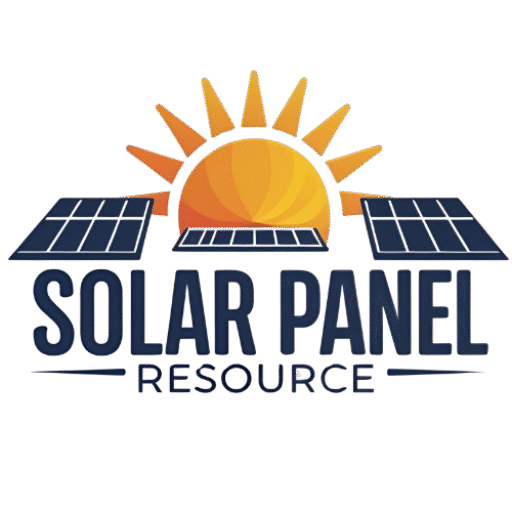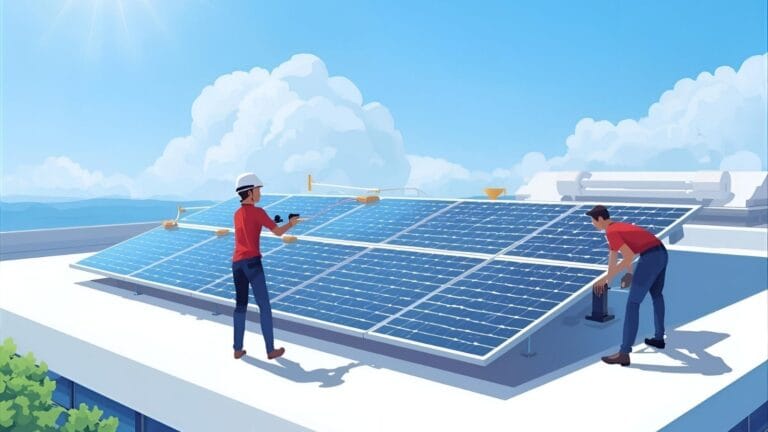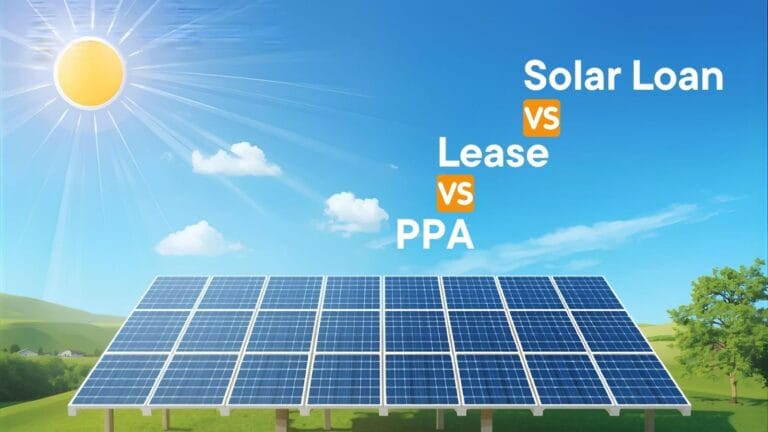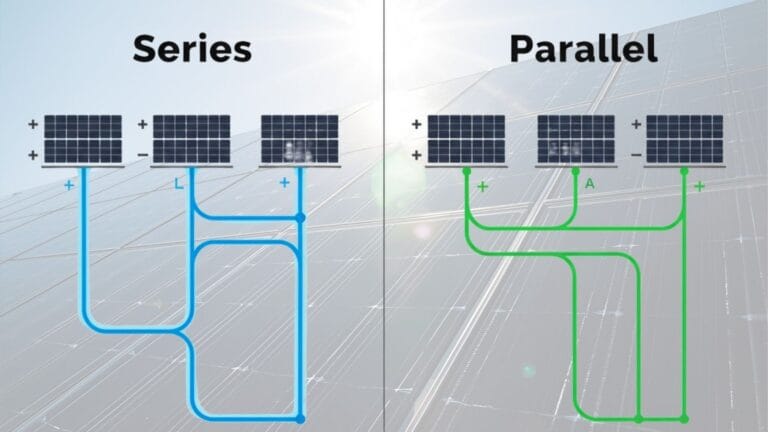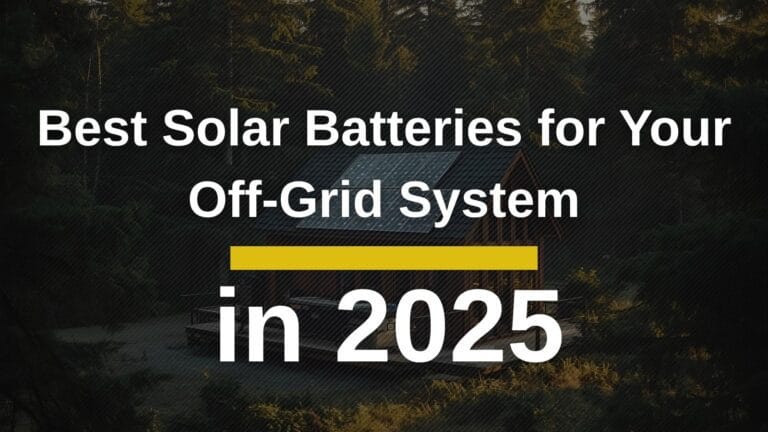How to Connect Solar Panels to Home Appliances Safely?
Connecting solar panels to your home appliances is the ultimate goal of any solar project, but it’s not as simple as plugging them in. This crucial step demands expert planning, strict adherence to electrical codes, and a deep understanding of system design. Doing it improperly can lead to serious safety hazards, equipment damage, and an inefficient system.
The Expertise Behind the Connection
Solar panels on your roof are just one piece of a complex system. They produce Direct Current (DC) electricity, but your home’s appliances run on Alternating Current (AC) electricity. Bridging this gap requires specialized components and a professional’s touch.
- The Inverter is the Brain: The most critical piece of equipment is the inverter. This device is responsible for converting the DC power from your panels into usable AC power for your home. Without it, you cannot safely power a single appliance. Choosing the right inverter type (string, micro-inverter, or hybrid) is a technical decision that impacts your system’s efficiency, especially if you have roof shading or plan to add a battery later.
- System Sizing: An expert understands how to properly size your system to match your home’s energy consumption. This involves a load assessment to calculate your household’s energy demand, ensuring you install enough panels to power your appliances without overproducing.
Why Trust the Process?
Trust in solar is built on safety. The electrical work of a solar installation is complex and, if done improperly, can create fire and shock hazards. This is why following local electrical codes is non-negotiable.
- Arc Faults and Fires: The most common cause of solar-related fires is poorly terminated wiring and loose connections. This can lead to arc faults—sparks that generate intense heat and can ignite nearby materials. A certified professional uses the right tools and techniques to ensure every connection is secure, mitigating this risk.
- Preventing Electrocution: Solar panels can produce a lethal amount of DC electricity in broad daylight, even when disconnected. Proper handling, safety protocols, and the use of modern equipment with rapid shutdown devices are essential to protect both homeowners and first responders in an emergency.
A Secure Connection for a Durable System
A professionally installed and code-compliant solar system is the only way to ensure safety, efficiency, and a long lifespan. By understanding the complexity of the components and the reasons behind the regulations, you can appreciate why expert guidance is paramount. The journey from capturing sunlight to powering your coffee maker is a technical one, and it’s a journey best taken with a trusted and experienced professional.
Steps to Connect Solar Panels to Home Appliances Safely
Correctly integrating a solar system into your home’s electrical grid is a highly technical process that requires careful planning, adherence to strict electrical codes, and a firm understanding of system components. An improperly connected system can be a fire risk, inefficient, or even damage your appliances.
Expertise: The Right Design and Components
A professional solar installation is more than just putting panels on a roof; it’s a meticulously planned electrical system. It begins with a load assessment to determine your household’s energy needs. Based on this, an expert will design a system that includes:
- Inverter Integration: This is the most crucial step. Solar panels produce direct current (DC) electricity, but your home’s appliances run on alternating current (AC). An inverter is the brain of your system, safely converting DC power to usable AC power at the correct voltage and frequency. You should never connect appliances directly to solar panels without an inverter, as the unregulated voltage will destroy your electronics and create a fire hazard.
- Correct Wiring: Wiring a solar system is not a DIY job. It requires specific cables rated for outdoor, high-voltage PV applications. Professionals follow codes like the National Electrical Code (NEC) to ensure correct polarity, use of appropriate conduits, and a clean, secure installation that prevents loose connections and shorts.
- Protective Devices: To guard against overloads and faults, a solar system must be equipped with essential safety devices like circuit breakers, fuses, and surge protectors. These components are the system’s “immune system,” protecting both your home’s electrical grid and the system itself from damage.
Trust: Why Compliance is Non-Negotiable
Your home’s safety is directly tied to the legality of your installation. A professionally installed, code-compliant system offers peace of mind through a vital final step: inspection.
- Third-Party Verification: After your system is installed, a local authority will perform a thorough inspection to verify that all building and electrical codes have been followed. This third-party check ensures your system is safe before you receive permission to operate.
- Eligibility for Incentives: This final sign-off is your ticket to crucial financial benefits. Without a passed inspection, your system will not be eligible for net metering, rebates, or tax credits, completely undermining your return on investment.
A solar system’s benefits—environmental, economic, and practical—are only fully realized when it’s built to a standard of safety and quality that can be verified and trusted.
For homeowners starting from scratch, understanding the installation process is equally important. Learn more in our step-by-step solar roof installation guide.
Reference: NEC Article 690: Solar PV System Safety Requirements
What is the downside of solar panels?
A solar investment, like any other, has its challenges. While it offers incredible benefits, it’s wise to consider the potential downsides with a clear head. The most significant challenges include the intermittent nature of solar generation, the high initial cost, space requirements, and end-of-life management.
Intermittency: The Core Challenge
Unlike traditional baseload power sources like nuclear or hydroelectric dams, solar panels only generate electricity when the sun is shining. This leads to intermittency, where energy output fluctuates throughout the day, the seasons, and with changing weather. This variability can be a challenge for grid operators who need a constant, stable supply of power.
- Mitigation through Technology: The industry is actively addressing this with energy storage solutions. By pairing solar panels with a home battery, you can store excess energy generated during the day and use it at night or during a power outage. While batteries add to the upfront cost, they provide greater energy independence and grid resilience.
Upfront Cost and Space Constraints
Despite a significant drop in prices over the last decade, a quality solar system with professional installation, permits, and, optionally, a battery, remains a significant investment. The cost per watt has fallen dramatically, but total system costs can still be a barrier for many.
Furthermore, solar feasibility is highly dependent on your property. Homes with shaded roofs from trees or buildings, or those with roofs that are too small or face the wrong direction, may not be able to generate enough energy to justify the investment. An expert site assessment is necessary to determine if solar is a viable option for your home.
End-of-Life Management: A Growing Concern
Solar panels are built to last 25-30 years, which is great for ROI but creates a future waste management challenge. The first wave of panels is just now reaching the end of its life, and a large-scale recycling infrastructure is still being developed globally.
- Towards a Circular Economy: The industry is moving toward a circular economy model. This involves designing panels that are easier to disassemble and recover materials from. Companies like SOLARCYCLE are leading the way by developing processes to recycle up to 95% of a panel’s valuable materials, including glass, aluminum, and silver, to be used in new manufacturing.
Permitting: A Necessary but Complex Step
While the permitting process can be complex and time-consuming, it is essential for a successful project. Permits aren’t just a regulatory burden; they are a vital safeguard that ensures your system is installed safely and correctly. Skipping this step can lead to legal penalties and will make your system ineligible for critical financial incentives. A reputable installer will handle this entire process for you, ensuring that your system is not only functional but also fully compliant and protected.
Do solar panels really make a difference?

Yes, solar panels offer substantial benefits. The case for solar power is not just about environmental protection; it’s a compelling economic and technical argument that benefits individual households, communities, and the broader energy grid. Here’s a look at why solar is a smart investment.
Environmental Impact: A Greener Grid for All
Solar power is a cornerstone of the global energy transition. It plays a critical role in reducing our reliance on fossil fuels, which are the main source of carbon emissions. According to the International Energy Agency (IEA), solar and wind power are the fastest-growing sources of electricity worldwide. By displacing energy from traditional power plants, every kilowatt-hour of solar energy you generate can prevent a significant amount of CO₂ from entering the atmosphere, depending on your local energy mix. This is a direct, measurable contribution to fighting climate change.
Economic Impact: Building Financial Security
Solar power delivers clear financial benefits that go far beyond a reduced electricity bill.
- A Hedge Against Inflation: By generating your own power, you’re less exposed to the unpredictable price hikes and market volatility of traditional electricity suppliers. This provides a long-term hedge against rising electricity tariffs, giving you greater control over your household budget for decades to come.
- Increased Property Value: Studies consistently show that homes with owned solar panel systems sell for a premium and spend less time on the market. Data from a 2025 Zillow and SolarReviews study found that homes with solar panels sell for an average of 6.9% more than comparable non-solar properties.
Technical Impact: Strengthening the Grid
Modern solar systems with smart inverters are more than just power generators; they are active participants in supporting the electrical grid. Beyond converting the panels’ direct current (DC) to alternating current (AC) for your home, these inverters provide essential grid-support functions that were once handled only by traditional power plants.
Grid Resilience: This distributed power generation model means that power is being produced closer to where it’s consumed, reducing the strain on long-distance transmission lines and making the entire system more resilient to weather events and other disruptions.
Voltage and Frequency Regulation: Smart inverters can help stabilize the local grid’s voltage and frequency, which is crucial for preventing outages and ensuring a reliable power supply.
Save if I install solar panels?
The financial return on a solar investment is highly dependent on key variables, including your location, energy consumption, and available incentives. However, when these factors align, solar offers a powerful way to achieve financial independence from the grid. The long-term profitability of your system is directly linked to legal compliance, which unlocks crucial financial benefits.
The Financial Upside: Savings & Payback
For an average U.S. household, the annual savings from a solar system can range from $800 to over $2,700, with the highest savings found in states with expensive electricity and abundant sunshine. When you factor in the 30% federal tax credit and other local incentives, the typical payback period for a residential system is now a competitive 6 to 10 years. After this period, your solar panels continue to generate essentially free electricity for decades to come, providing a consistent return on your initial investment.
- Expertise: The Role of Batteries: While adding battery storage increases the upfront cost and can extend the payback period, it’s a strategic move in markets with time-of-use (TOU) tariffs. Batteries allow you to store surplus solar energy and use it during peak demand hours when electricity is most expensive. This energy arbitrage enhances your savings and reduces your reliance on the grid, maximizing your self-consumption.
For Businesses: Supercharged Returns
Commercial solar is an even more compelling financial proposition due to specialized tax policies. In addition to the federal tax credit, businesses can take advantage of accelerated depreciation through the Modified Accelerated Cost Recovery System (MACRS). This allows companies to deduct a significant portion of the system’s cost from their taxable income over a short period. This combination of incentives often shortens commercial payback periods to just 3-7 years, making solar one of the most attractive capital expenditures for a business.
- Trustworthiness: How it Works: For businesses, a solar system is not just an energy source; it’s a tax-deductible asset. When you combine the direct dollar-for-dollar reduction from the tax credit with the long-term tax savings from depreciation, you dramatically improve your cash flow and reduce your net investment cost.
The Human Element: Compliance is Critical
Ultimately, the financial viability of a solar system is contingent on its legality. Without a proper permit and inspection, your investment is at risk. An unpermitted system is not only a safety liability but also ineligible for net metering, rebates, and tax credits. This completely undermines your financial returns and can lead to fines or even the forced removal of your system. Therefore, partnering with a professional installer who ensures correct permitting and a compliant design is as crucial for long-term profitability as the quality of the panels themselves.
What is the biggest risk of solar panels?
Beyond a significant investment, solar systems present risks that demand expert attention. These risks can be technical, financial, and policy-related. Successfully navigating them is critical to protecting your home and maximizing your return on investment.
The Technical Risks: Safety First
The most immediate risks of solar are physical and relate directly to the quality of the installation.
- Improper Installation: Poor electrical work is the primary cause of solar-related fires. Faulty wiring, loose connections, or incorrect grounding can create dangerous electrical arcing that can ignite combustible materials. An installer without proper training can also cause roof damage by failing to account for structural loads or penetrating the roof membrane incorrectly, which can lead to leaks.
- DIY Hazards: While some may be tempted by a do-it-yourself (DIY) approach to save money, it is extremely dangerous for grid-tied systems. A DIY system may not include the necessary rapid shutdown devices and anti-islanding features, which are required to disconnect the system from the grid during a power outage. This can create a severe backfeeding risk, where the system sends live power back onto the grid and can electrocute utility workers performing repairs.
- Component Complexity: Modern systems with inverters and batteries add layers of complexity. These components require proper ventilation and secure installation in a climate-controlled space to operate safely and efficiently.
The Policy Risks: Financial Uncertainty
The long-term financial viability of a solar system is directly linked to the stability of energy policies.
- Net Metering Changes: Net metering rules, which dictate how you are credited for excess power sent back to the grid, are subject to political and regulatory changes. In some states, a shift from a one-for-one credit to a lower, wholesale rate has significantly extended the payback period for new solar owners.
- Incentive Instability: Government tax credits, rebates, and feed-in tariffs can be altered or expire, impacting the financial case for solar. This is why it’s crucial to understand the current incentive landscape and choose an investment with a strong return even if policies change.
Mitigating Risk: Professionalism and Compliance
To protect your investment, your home, and your family, experts recommend a few key strategies:
Prioritize Permits and Inspection: Partner with an installer who handles the entire permitting process and ensures your system passes a final inspection. This not only guarantees that your system is safe but also that you remain eligible for all available financial incentives and can secure insurance coverage.
Choose a Certified Installer: Use a licensed and certified installer with a proven track record. This ensures that the installation will be done correctly, a critical factor for safety and long-term performance.
Select Quality Equipment: Use certified, Tier 1 equipment from reputable manufacturers. High-quality inverters and panels are more reliable and are less likely to fail, and they come with strong warranties that protect your investment.
What is more efficient than solar panels?
Efficiency can be defined in many ways, and while solar’s capacity factor may not always be a standout, its overall value proposition—considering cost, speed, and scalability—makes it one of the most competitive energy sources today.
1. Expertise: Comparing Technologies with a Nuanced Eye
When evaluating energy sources, experts use metrics beyond simple efficiency.
- Capacity Factor: This metric measures how often a power plant runs at its full potential. Nuclear and hydroelectric plants have high capacity factors, typically over 90%, because they can provide continuous, predictable power. Wind turbines’ capacity factors vary by location but average around 35%, while solar PV averages around 23% due to their reliance on weather and daylight.
- Dispatchability: A key challenge for renewables is their lack of dispatchability—the ability to be turned on or off to meet demand. While PV cannot do this on its own, technologies like Concentrated Solar Power (CSP) can. CSP uses mirrors to focus sunlight and heat a fluid, which can be stored in large tanks of molten salt. This stored heat can then be used to generate steam and produce electricity even after the sun has set, making it a dispatchable renewable.
- Levelized Cost of Energy (LCOE): This is where solar truly shines. The LCOE measures the total cost of building and operating a power plant over its lifetime. Solar PV’s LCOE has fallen so dramatically that it is now the cheapest source of new electricity generation in many parts of the world, making it more cost-effective than building new coal or natural gas plants, even before subsidies.
2. Trustworthiness: Balancing Strengths and Weaknesses
While other technologies may exceed solar in specific metrics like capacity factor or dispatchability, few can match its overall value proposition. Solar is a modular technology that can be deployed at any scale, from a single rooftop to a multi-megawatt solar farm. This scalability and speed of deployment are unmatched. Solar projects can go from planning to operation in a matter of months, a stark contrast to the years required for a nuclear or large-scale hydroelectric plant.
3. Experience: A Human-Written Analogy
Think of it like transportation. While a train (like a nuclear plant) is incredibly efficient at moving many people over long distances continuously, it’s not practical for every situation. A small electric car (like a solar panel) may have a more limited range (intermittency) and can only carry a few people, but it’s cheap, easy to get, and can be used to solve millions of individual transportation needs that a train simply can’t. Solar PV’s strength lies in its ability to be a flexible, accessible solution for a wide range of energy challenges.
How many solar panels to power a house?

Sizing a solar system is a critical first step. It depends on your home’s energy consumption, the local solar resource, and the wattage of the panels. In the U.S., the average household uses about 10,500 kWh/year. To offset this, a system of around 7 kWp (kilowatt-peak) is typically needed, which translates to about 18 panels rated at 400 W each.
The Science Behind Sizing
The fundamental calculation for sizing a solar system is simple: you need to generate as much energy as you consume. This is determined by three key factors:
- Your Energy Consumption: This is the most important factor. You should look at your past 12 months of utility bills to get a clear picture of your annual electricity usage.
- Solar Resource: Not all locations receive the same amount of sunlight. This is measured by the solar yield (or performance ratio), which represents the average kilowatt-hours per kilowatt of installed capacity per year (kWh/kWp/year). It accounts for local weather, cloud cover, and other environmental factors.
- Panel Efficiency and Wattage: A panel’s wattage determines its maximum power output under ideal conditions, while its efficiency indicates how well it converts sunlight to electricity. A higher-wattage, more efficient panel can produce more power in a smaller footprint, meaning you may need fewer panels to reach your target capacity.
The Permitting Puzzle: How Laws Affect Your Design
Permits don’t just authorize a project; they can indirectly dictate its size and design. Your installer must factor in local regulations from the very beginning to avoid costly redesigns and delays.
- Zoning and Planning: Some municipalities have strict rules that can limit the size of a solar array. These can include restrictions on how much of your roof area can be covered, or rules about panel height and visibility from the street, particularly in historic districts.
- Property and Setbacks: For ground-mounted systems, setbacks from property lines or public roads may limit the total usable area, which in turn restricts the number of panels you can install.
- Electrical Service Size: The total output of your solar system must be compatible with your home’s main electrical panel. If your system is too large, it could overload the existing service, requiring a costly electrical upgrade to the main panel.
A professional installer’s expertise in navigating these legal and technical constraints is crucial to designing a system that is not only financially viable but also fully compliant with all local laws.
Are solar panels a good investment?
Yes, solar is a strong investment in 2025 and beyond. It’s not just about a single factor but a combination of long-term financial, environmental, and technical benefits. The key to unlocking these returns is ensuring your system is professionally installed and legally compliant.
1. Expertise: The Financial & Technical Case
The case for solar as a wise financial decision is stronger than ever.
- Financial Returns: Technology costs have plummeted, making systems more affordable. When combined with federal incentives like the 30% solar tax credit, a typical residential system can achieve a payback period of 6-10 years. Beyond that, you essentially receive free electricity, minus any minimal maintenance.
- Minimal Degradation: Solar panels are incredibly durable. Modern modules have an annual performance loss of only 0.4–0.6%. This means that after 25 years, they will still be operating at well over 85% of their original capacity, ensuring decades of clean energy production.
- Resilience and Energy Independence: Solar systems, particularly when paired with a battery, provide a critical layer of resilience against grid outages. A home with solar and storage can maintain power during an emergency, reducing its vulnerability to an increasingly unstable electrical grid.
2. Trustworthiness: Preserving Your Investment Value
While solar adds significant value to a property, that value is directly tied to a legal installation.
Professionalism Pays Off: The best way to mitigate these risks is to partner with a certified and reputable installer. They will ensure your system is properly designed, code-compliant, and fully permitted, which preserves your home’s long-term marketability and protects your investment.
Higher Property Value: Studies show that homes with owned solar systems sell for an average of 6.9% more than homes without. This is because buyers recognize the long-term energy savings and are willing to pay a premium for a turn-key solution.
Legal Compliance is Key: Unpermitted or improperly installed systems can become a significant liability. During a property sale, unpermitted work can complicate or delay the transaction. Lenders and insurers may refuse to approve the sale or provide coverage until the system is brought up to code, which can require a costly retroactive permitting process.
Is it safe to live next to solar panels?
Yes, properly installed solar panels are safe. The main risks associated with solar, such as electrical hazards and fire, are minimal due to strict safety standards, modern equipment, and the legal requirement for professional installation and inspection.
1. The Science: Why Solar is Safe
When people ask about solar panel safety, two common concerns are electromagnetic fields (EMF) and fire risk.
- Negligible EMF: Inverters and electrical wiring in a solar system do produce electromagnetic fields, but their levels are comparable to those of common household appliances like a refrigerator. According to the World Health Organization (WHO), the low-frequency EMFs produced by solar equipment pose no known health risks and fall well within international safety guidelines.
- Preventing Electrical Faults: The primary cause of solar-related fires is not the panels themselves but rather faulty wiring and poor connections. This is a risk for any electrical system. However, modern solar systems mitigate this risk with specialized components and professional installation.
2. Expertise: The Role of Technology and Installation
The solar industry has developed sophisticated safety measures to protect both homeowners and first responders.
- Rapid Shutdown Devices: A key safety feature required by most modern electrical codes is rapid shutdown. This technology is a critical safeguard for firefighters. In an emergency, first responders can activate a clearly marked switch that de-energizes the solar panels and wiring on the roof to a safe voltage level within seconds.
- Professional Installation: The expertise of a certified installer is your best defense against safety risks. Professionals understand how to correctly size, wire, and ground a system according to the National Electrical Code (NEC), which is the cornerstone of electrical safety in the U.S.
3. Trustworthiness: The Importance of Permits and Inspections
Beyond a professional installation, legal compliance provides a vital layer of protection and assurance.
Building Community Trust: This process is what assures not only you but also your neighbors and local authorities that your solar system is safe, reliable, and contributes to the community’s energy infrastructure without posing a danger.
Third-Party Verification: The permitting process requires a city or county inspector to conduct a final safety check before your system can be activated. This independent verification ensures that your system is built to the highest safety standards and that all components are installed correctly.
Installing solar panels safely and effectively is a matter of both engineering and legal compliance. By following professional guidance and securing the necessary permits, homeowners can confidently integrate solar energy into daily life, power appliances safely, and contribute to a cleaner energy future.
The Final Word: Expertise & Trust
A solar system is a powerful, long-term asset, but its value is fully realized only when it is installed correctly. Expert planning ensures that all components, from the inverter that powers your appliances to the protective devices that prevent electrical hazards, are properly integrated into your home. This prevents electrical faults, which are the main safety risk in any solar system, and ensures that the installation won’t compromise your home’s structural integrity.
This is where trustworthiness comes in. The permitting and inspection process, while sometimes complex, is your ultimate protection. It guarantees that an independent authority has verified the system’s safety before you flip the switch. This provides peace of mind, not just for you, but for your neighbors and the utility company.
Experience: The Rewards of a Sound Investment
When you prioritize safety and compliance, the rewards of solar are substantial and long-lasting.
- Financial Benefits: A legally installed system is eligible for all federal, state, and local incentives, including the lucrative 30% federal tax credit. Without a permit, you risk losing these benefits, which can change your entire return on investment.
- Unlocking Property Value: A fully permitted solar system is a major selling point for your home. It can increase your property value and make it more attractive to buyers who are looking for energy-efficient, resilient homes.
- Powering a Cleaner Future: By integrating solar, you’re not just saving money; you’re actively contributing to a more sustainable world. You become a participant in the clean energy transition, reducing your carbon footprint and supporting the growth of one of the most accessible and cost-effective renewable technologies available.
In the end, the journey to a solar-powered home is a partnership between you and a trusted professional. They handle the complexity so you can enjoy the simplicity of clean, safe energy.

Solar Energy Enthusiast & Renewable Energy Researcher
Vural’s journey into solar energy began four years ago, driven by frequent power outages and high electricity bills at his own home. He has since gained hands-on experience with both personal and commercial solar projects. At solarpanelresource.com, Vural shares his real-world insights and in-depth research to guide homeowners and business owners on their own path to energy independence.
